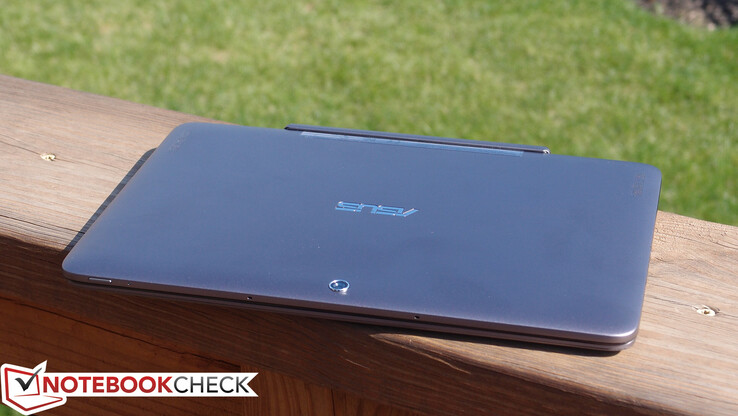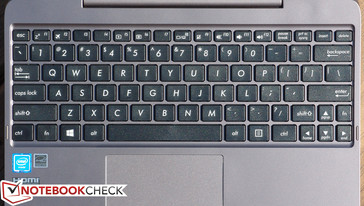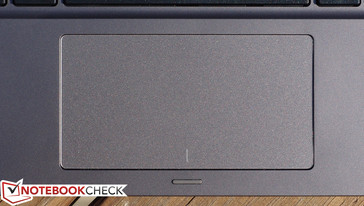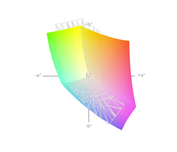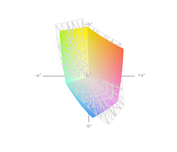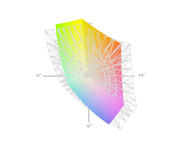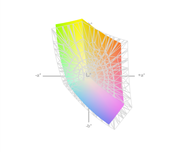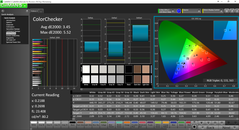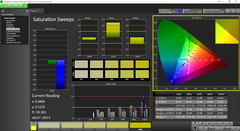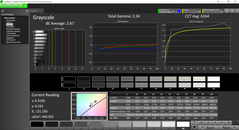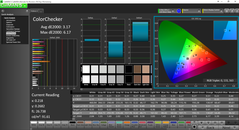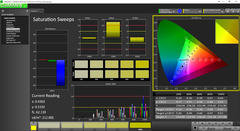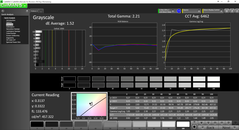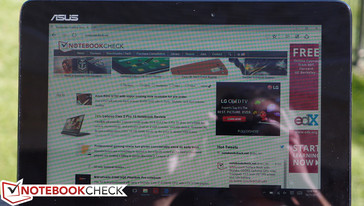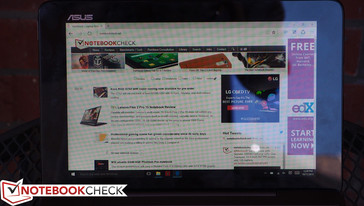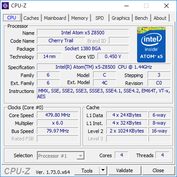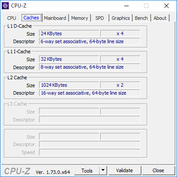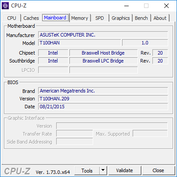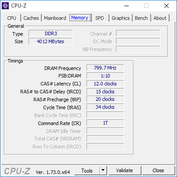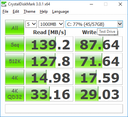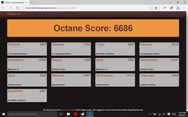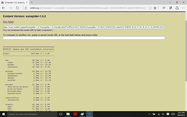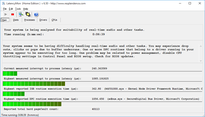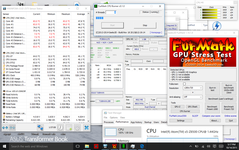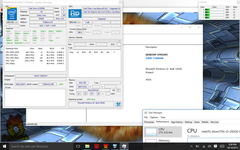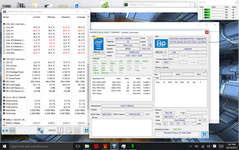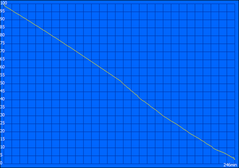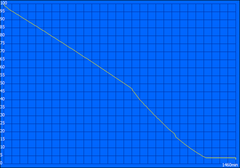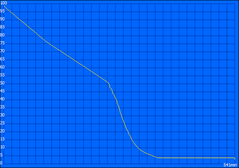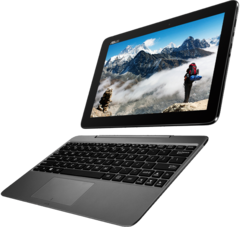Asus Transformer Book T100HA Convertible Review
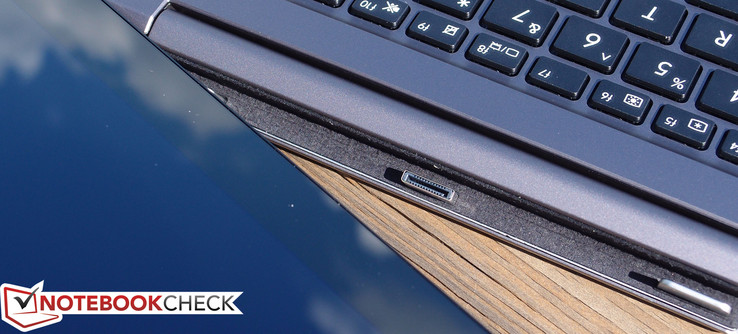
Asus has turned some heads with the advent of their Transformer Book line of ultra-affordable 2-in-1 detachable convertibles, primarily thanks to the fact that they don’t feel like ultra-affordable devices. Back in April, when we reviewed the Asus Transformer Book T100 Chi, we praised its metal construction, portability, easy coupling mechanism, good screen, and great battery life—and, of course, its reasonable pricing. Although it wasn’t a full package, for under $400, it was hard to argue against it.
The T100HA seeks to reconcile some of the shortfalls of its predecessor, beginning with the deficiency in system memory (the T100 Chi featured just 2 GB of RAM)… and just for kicks, it lowers the price even further. There are compromises to be made, but we’ll cover those in detail in a bit. For now, the $299 asking price will score you a fairly impressive lineup of specs: an Intel Atom x5-Z8500 SoC, 4 GB of LPDDR3 RAM, an IPS touchscreen, and Windows 10 Home 64-bit. There’s also some bonuses, such as a USB Type-C port, alongside yet again two additional USB ports, for a grand total of three. Of course, it’s all wrapped up in a metal casing comparable to that of its predecessor; if nothing else, it’s enough to get people talking again. Let’s see if it’s enough to justify a purchase.
Case
The T100HA features a sleek yet plain metal casing (available in four colors: Silk White, Aqua Blue, Rogue Pink, and our color, Tin Grey) which at first glance might appear to be plastic. However, the cool touch and relative rigidity (of the tablet portion of the unit, at least) quickly dispel any such concerns. There is very little flex to the tablet half; although moderate pressure on the back of the unit can indeed produce distortions on the LCD panel, they’re relatively minor. The same goes for torsion resistance: though it isn’t the best, it’s far superior to the majority of devices in the value segment. Meanwhile, the included keyboard base unit is a bit flimsier, suffering notable flex in the center during heavier typing sessions. It also features sharper edges along the back side where the two halves of the metal casing meet, something else which the actual tablet fortunately lacks.
Overall, however, this machine still seems to belong in a class above that of its price point, so kudos to Asus for continuing to provide compelling value in the realm of construction. As the overall design remains quite similar to that of its predecessor, the weight and size are also nearly identical. The T100HA tips the scales at just 1.07 kg (tablet and base together), which is incredibly portable by any definition.
The hinges also are practically unchanged from the T100 Chi, though the base unit connection strip now features a data port to facilitate the full-sized USB 2.0 port on the keyboard base. Yet again, joining and separating are quick and easy, with no latches to fuss with or switches to activate—it’s fully magnetic. Asus boasts that their testing of the hinges involves more than 20,000 swing tests and 25,000 open-close tests to ensure reliability in the long term.
Predictably, not much is possible in the way of maintenance. Although it is possible to open the back of the tablet, which is secured solely via a series of clips around the perimeter, nothing much apart from the battery is replaceable once inside. Everything from the RAM to the WLAN adapter are soldered directly onto the board.
Connectivity
The T100HA features an impressive array of ports for a unit of its size. You get not one, not two, but three USB ports: one micro-USB, one USB 3.1 Type-C port, and on the keyboard base, a third full-sized USB 2.0 port. That this is greater in number than some high-end Ultrabooks (such as the Dell XPS 13-9343) speaks volumes as to the practicality of the T100HA in comparison. There’s also micro-HDMI for video output and a microSD card port for storage expansion possibilities. All of the ports, except for the USB Type-C port, line the right edge of the unit.
Communication
The WLAN adapter in the T100HA—a Broadcom 802.11abgn 1x1 adapter—is identified as the same model as that of the T100 Chi, so we didn’t expect any major differences in performance. That’s mostly how it turned out, too, with average signal levels in most areas, and weaker-than-average 5 GHz performance at times. Either way, however, we didn’t see any major connectivity problems during our test period. Bluetooth 4.0 is once again included.
Accessories
The Transformer Book’s small micro-USB AC adapter (weight: 84 grams) is hardly larger than most phone chargers, so it hardly detracts from the attractive carry weight of the entire package. Apart from that, nothing else is included.
Asus provides a standard 12-month depot warranty with the T100HA.
Input Devices
Keyboard
The keyboard on the T100HA is quite similar to that of its predecessor—identical in layout in fact, with the only difference at all being the addition of an Airplane Mode switch as a secondary function on the F3 key. Thanks to this, most of our original impressions extend to this review; namely, that the key travel is surprisingly long for such a small unit (far more than with the Microsoft Surface Pro type covers, for instance), but that the shrunken layout (which is approximately 12% smaller width and 25% small height than that of a normal keyboard) makes adjusting somewhat challenging.
In spite of these similarities, however, the keyboard has also developed one new shortcoming: a more notable sense of flex and bounce while typing, accompanied by a hollow rattling sound that is less noticeable but cheaper-sounding than that of the Surface Pro type cover. It might seem like a small difference, but the entire typing experience suffers as a result.
On the other hand, one major improvement has been made to the keyboard as well. During our testing of the T100 Chi, we noted an annoying initialization delay after resuming from sleep or powering the machine on. Since the T100HA no longer relies on wireless connectivity between the keyboard base and the tablet unit, this delay is history; the keyboard is now ready to use the instant the device is on.
Touchpad
The touchpad is practically identical to that of the T100 Chi as well, though even it succumbs somewhat to the flex of the base unit. The integrated buttons have not improved and are still difficult to operate, but the pad itself is comfortable and seems accurate. It also seems more responsive, and in fact, Asus claims it has improved responsiveness by “50%” over the previous models. Like the keyboard, the touchpad has also benefited from the expulsion of the irritating initialization delay of its predecessor.
Touchscreen
The T100HA’s touchscreen has seen no reversals of fortune since our evaluations of T100 Chi; it’s still easy to use and supported well by the hinges. The screen does not bounce distractingly when tapped.
Display
One of the biggest differences between the T100HA and the T100 Chi is the LCD panel. While both are glossy 10.1-inch IPS displays, practically everything else has changed. For starters, the new panel features an inferior resolution: just 1200x800, which translates to a PPI of just 143 (versus the T100 Chi’s PPI of 224). That’s disappointing, but elsewhere, the panel shines (quite literally), with excellent brightness and improved contrast and color coverage.
| |||||||||||||||||||||||||
Brightness Distribution: 85 %
Center on Battery: 480.2 cd/m²
Contrast: 1482:1 (Black: 0.324 cd/m²)
ΔE ColorChecker Calman: 3.45 | ∀{0.5-29.43 Ø4.78}
ΔE Greyscale Calman: 2.67 | ∀{0.09-98 Ø5}
84.38% sRGB (Argyll 1.6.3 3D)
47.28% AdobeRGB 1998 (Argyll 1.6.3 3D)
53.3% AdobeRGB 1998 (Argyll 3D)
73% sRGB (Argyll 3D)
52.8% Display P3 (Argyll 3D)
Gamma: 2.34
CCT: 6164 K
The remarkable average brightness of 454.6 cd/m² is considerably higher than that of the T100 Chi (“just” 395.3 cd/m²), and the black value is also much lower: an excellent 0.324 cd/m², which produces a terrific contrast ratio of 1482:1 (T100 Chi: 553:1). Brightness distribution has seen a slight drop from 90% to 85%, which normally wouldn’t be an issue, though the difference between the center and left side quadrants of the panel is over 70 cd/m², which could be noticeable to some people.
Those values are already impressive enough, but the color reproduction has also been improved with the new panel. Our measurements reveal coverage of 84% of the sRGB spectrum, which is very good for a machine of this price. By comparison, the T100 Chi managed just 66% sRGB coverage.
| Asus Transformer Book T100HA-C4-GR HD Graphics (Cherry Trail), Z8500, Samsung CGND3R eMMC | Asus T100CHI-B1-BK HD Graphics (Bay Trail), Z3775, 32 GB eMMC Flash | Microsoft Surface 3 HD Graphics (Cherry Trail), Z8700, 128 GB eMMC Flash | Microsoft Surface Pro 3 HD Graphics 4400, 4300U, Hynix HFS128G3MNM | Dell Venue 11 Pro 7140 HD Graphics 5300, 5Y10a, Sandisk X110 M.2 SD6SP1M-128G | |
|---|---|---|---|---|---|
| Display | -12% | 32% | 22% | ||
| Display P3 Coverage (%) | 52.8 | 45.62 -14% | 68.8 30% | 63.6 20% | |
| sRGB Coverage (%) | 73 | 65.7 -10% | 98.7 35% | 88.8 22% | |
| AdobeRGB 1998 Coverage (%) | 53.3 | 47.4 -11% | 70.4 32% | 65.6 23% | |
| Screen | -54% | -2% | -29% | -30% | |
| Brightness middle (cd/m²) | 480.2 | 407.1 -15% | 399 -17% | 355.3 -26% | 386 -20% |
| Brightness (cd/m²) | 455 | 395 -13% | 380 -16% | 338 -26% | 357 -22% |
| Brightness Distribution (%) | 85 | 90 6% | 90 6% | 91 7% | 84 -1% |
| Black Level * (cd/m²) | 0.324 | 0.736 -127% | 0.49 -51% | 0.33 -2% | 0.4 -23% |
| Contrast (:1) | 1482 | 553 -63% | 814 -45% | 1077 -27% | 965 -35% |
| Colorchecker dE 2000 * | 3.45 | 6.11 -77% | 1.66 52% | 4.72 -37% | 3.71 -8% |
| Greyscale dE 2000 * | 2.67 | 6.21 -133% | 2.75 -3% | 6.53 -145% | 5.4 -102% |
| Gamma | 2.34 94% | 1.99 111% | 2.22 99% | 2.17 101% | 2.33 94% |
| CCT | 6164 105% | 6960 93% | 6358 102% | 6707 97% | 6666 98% |
| Color Space (Percent of AdobeRGB 1998) (%) | 47.28 | 43.54 -8% | 64.4 36% | 59.37 26% | |
| Color Space (Percent of sRGB) (%) | 84.38 | 98.8 17% | |||
| Colorchecker dE 2000 max. * | 3.24 | ||||
| Total Average (Program / Settings) | -33% /
-42% | 15% /
6% | -4% /
-15% | -30% /
-30% |
* ... smaller is better
But that’s not all: CalMAN 5 reveals appreciably improved color accuracy across the board, with precalibration ColorChecker deltaE2000 values of 3.45 (average) and 5.52 (max) and a grayscale deltaE of 2.67. We also recorded a Total Gamma value of 2.34 and a CCT average of 6164, all of which are very close indeed to ideal, and all of which are closer than those produced by the T100 Chi. It’s safe to say that apart from resolution alone, the T100HA’s display panel is actually quite superior to that of the T100 Chi—and we had few complaints about that one to begin with considering how much we’re paying for it.
Performance
The T100HA features a new Intel Atom x5-Z8500 quad-core SoC and, perhaps more importantly, 4 GB of LPDDR3 RAM (which is double that of the T100 Chi, and one of our primary performance-based criticisms). There’s also the promise of faster eMMC storage—at least, if Asus’s promotional materials are to be believed. We’ll test all of that shortly.
For the most part, performance feels pretty comparable to that of the T100 Chi. We certainly weren’t blown away by the speed, and honestly, the additional 2 GB of RAM doesn’t seem to have made a major dent in the overall equation. To judge performance while unplugged, we performed a second run of 3DMark 11 on battery power only. The results were no different, suggesting full power operation regardless of power state. Finally, although LatencyMon reported possible issues with real-time audio/video playback, we only saw a couple of quick spikes throughout the entire ten-minute period during which the test ran, so it isn’t likely to be much of a problem.
Processor
The T100HA’s Intel Atom x5-Z8500 CPU is a new quad-core SoC based on the Cherry Trail platform, featuring clock rates ranging from 1.44 – 2.24 GHz. However, while performance is similar to that of the Qualcomm Snapdragon 810, the focus here is primarily on efficiency and stability in passively-cooled devices (such as the T100HA); as such, the Atom x5-Z8500 is built with a new 14 nm low-power process (P1273) with tri-gate transistors, and it features an SDP of just 2 watts, which indicates a TDP of below 4 watts.
As compared to the T100 Chi’s Intel Atom Z3775 SoC, performance is pretty mixed. In single-threaded applications, the T100 Chi actually wins out, such as super Pi 32M (1873 seconds vs. T100 Chi’s 1727). But in multithreaded or more complex benchmarks, the x5-Z8500 takes the edge, such as in Cinebench R10 xCPU 32-bit (4107 vs. the T100 Chi’s 4065). Either way, the differences are not great, which means that, as previously, CPU performance is also not great. Compared to, say, the Microsoft Surface 3 (Atom x7-Z8700), it’s only slightly behind, but obviously larger, actively-cooled tablets like the Surface Pro 3 put it to shame with scores of nearly double.
| Cinebench R10 | |
| Shading 64Bit (sort by value) | |
| Asus Transformer Book T100HA-C4-GR | |
| Microsoft Surface Pro 3 | |
| Rendering Multiple CPUs 64Bit (sort by value) | |
| Asus Transformer Book T100HA-C4-GR | |
| Microsoft Surface Pro 3 | |
| Rendering Single CPUs 64Bit (sort by value) | |
| Asus Transformer Book T100HA-C4-GR | |
| Microsoft Surface Pro 3 | |
| Shading 32Bit (sort by value) | |
| Asus Transformer Book T100HA-C4-GR | |
| Asus T100CHI-B1-BK | |
| Microsoft Surface 3 | |
| Microsoft Surface Pro 3 | |
| Rendering Multiple CPUs 32Bit (sort by value) | |
| Asus Transformer Book T100HA-C4-GR | |
| Asus T100CHI-B1-BK | |
| Microsoft Surface 3 | |
| Microsoft Surface Pro 3 | |
| Rendering Single 32Bit (sort by value) | |
| Asus Transformer Book T100HA-C4-GR | |
| Asus T100CHI-B1-BK | |
| Microsoft Surface 3 | |
| Microsoft Surface Pro 3 | |
| Dell Venue 11 Pro 7140 | |
System Performance
As for general system performance, as we mentioned above, it doesn’t feel notably improved from the T100 Chi. To corroborate this, we turn to PCMark for synthetic benchmarks. The PCMark 7 score of 2814 is only slightly higher than the T100 Chi’s 2705, confirming our subjective impressions. Meanwhile, we also performed PCMark 8 benchmarks on the T100HA, the results of which were congruent with the PCMark 7 assessment.
In short, performance is not bad, especially not for lightweight computing. As compared to the Chromebooks with which the T100HA is meant to compete, they suggest an acceptably capable system, and one which should not feel substantially slower than even those machines running the barebones Chrome OS.
| PCMark 7 Score | 2814 points | |
| PCMark 8 Home Score Accelerated v2 | 1697 points | |
| PCMark 8 Creative Score Accelerated v2 | 1798 points | |
| PCMark 8 Work Score Accelerated v2 | 1372 points | |
Help | ||
Storage Devices
Asus advertises that the T100HA’s eMMC storage is much improved over that of its predecessors (“up to 40 percent faster read performance” specifically, versus the 2013-era T100TA), and we’re happy to report that our benchmarks agree with this claim. CrystalDiskMark 3.0 reports read/write values of 139.2 MB/s and 87.64 MB/s respectively, versus 87.38 MB/s and 46.54 MB/s on the T100 Chi we reviewed. That’s a 59% / 88% difference, respectively, and some other values are even more lopsided (such as the 4K QD32 Write speed of 29.03 MB/s, an improvement of 390%). The 4K QD32 Read value is the only laggard, with just 33.16 MB/s, which is actually 45% slower than that of the T100 Chi.
Overall, these are good speeds for an eMMC storage solution, as most are typically quite slow. It’s nothing in comparison to a full-blown SSD, of course, but then again, the cost difference speaks for itself.
GPU Performance
The Atom x5-Z8500’s Intel HD Graphics implementation features DirectX 11.2 support and a clock speed of up to 600 MHz (subject to TDP and thermal constraints, of course). Combined with the 12 EUs of this model, the GPU is roughly twice as fast as that of the Bay Trail tablet chipsets, and as such it should be able to play older games at low settings. High resolution external monitor output and video playback are no problem for the chip.
As for how well the T100HA performs in comparison to other machines with the same hardware, it’s generally ahead of the pack, sometimes by as much as 20 to 30%. For much more information on the GPU’s performance, see our dedicated page here.
| 3DMark 06 Standard Score | 3330 points | |
| 3DMark 11 Performance | 419 points | |
| 3DMark Ice Storm Standard Score | 18603 points | |
| 3DMark Cloud Gate Standard Score | 1905 points | |
| 3DMark Fire Strike Score | 248 points | |
Help | ||
| low | med. | high | ultra | |
|---|---|---|---|---|
| StarCraft 2 (2010) | 64 | 18 | 14 | 7 |
| BioShock Infinite (2013) | 20.46 | 9.82 | 8.42 | 2.59 |
Emissions
System Noise
The Asus Transformer Book T100HA is passively-cooled, and as such, is completely silent.
Temperature
While raw CPU performance may not be a focal point of the new Cherry Trail SoCs, efficiency certainly is. This, of course, directly translates to lower operating temperatures—or, at least, more headroom for stable sustained high processing clock rates. That’s precisely what we found in our temperature measurements: even after adjusting for room temperature differences, the T100HA consistently runs cooler than the T100 Chi, by 2 to 3 degrees C under load (30.4 °C and 29.4 °C on average for top and bottom, respectively). Idle temperatures are a little more ambiguous, with adjusted values actually higher than they were in our T100 Chi testing (25.7 °C/25.1 °C top/bottom)—but the difference is negligible nonetheless.
(+) The maximum temperature on the upper side is 35.2 °C / 95 F, compared to the average of 35.4 °C / 96 F, ranging from 19.6 to 60 °C for the class Convertible.
(+) The bottom heats up to a maximum of 33.4 °C / 92 F, compared to the average of 36.8 °C / 98 F
(+) In idle usage, the average temperature for the upper side is 25.7 °C / 78 F, compared to the device average of 30.3 °C / 87 F.
(+) The palmrests and touchpad are cooler than skin temperature with a maximum of 29.6 °C / 85.3 F and are therefore cool to the touch.
(±) The average temperature of the palmrest area of similar devices was 27.9 °C / 82.2 F (-1.7 °C / -3.1 F).
| Asus Transformer Book T100HA-C4-GR HD Graphics (Cherry Trail), Z8500, Samsung CGND3R eMMC | Asus T100CHI-B1-BK HD Graphics (Bay Trail), Z3775, 32 GB eMMC Flash | Microsoft Surface 3 HD Graphics (Cherry Trail), Z8700, 128 GB eMMC Flash | Microsoft Surface Pro 3 HD Graphics 4400, 4300U, Hynix HFS128G3MNM | Dell Venue 11 Pro 7140 HD Graphics 5300, 5Y10a, Sandisk X110 M.2 SD6SP1M-128G | |
|---|---|---|---|---|---|
| Heat | -13% | -21% | -32% | -28% | |
| Maximum Upper Side * (°C) | 35.2 | 40.2 -14% | 39.9 -13% | 45.2 -28% | 46.3 -32% |
| Maximum Bottom * (°C) | 33.4 | 39.8 -19% | 41.9 -25% | 46.4 -39% | 47 -41% |
| Idle Upper Side * (°C) | 27.6 | 30.4 -10% | 33.9 -23% | 35.2 -28% | 30.6 -11% |
| Idle Bottom * (°C) | 25.8 | 28.4 -10% | 31.2 -21% | 34.4 -33% | 33.3 -29% |
* ... smaller is better
Stress Test
Under full CPU stress, all four cores begin at 2240 MHz and remain solidly locked at that highest turbo frequency until eventually coming to rest around 1919 MHz (after higher temperatures set in; 83 °C is the maximum reached). GPU stress, meanwhile, locks the clock rates at around 380 MHz, which is well below the 600 MHz maximum clock rate. This again appears to be primarily a thermal limitation.
Under both GPU and CPU stress, we see the GPU hovering near 400 MHz and the CPU eventually remaining at 720 MHz, which is its minimum frequency. Temperatures, predictably, are comparable to those of the individual CPU and GPU stress tests prior.
Speakers
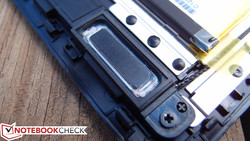
While the T100 Chi’s speakers were tinny yet adequate, the T100HA’s are surprisingly much lower-volume and sound completely devoid of any mid- to low-frequency response. They’re quieter and inferior to even the speakers on most every modern smartphone in fact; this is clearly an area where manufacturing had to cut corners.
For what it’s worth, the included Asus AudioWizard software really does not appear to make a difference at all. We at first were hoping for enhanced volume controls or normalization presets, but as far as we could tell the results were minimal at best.
Battery Life
Considering the lower-resolution screen and the higher-efficiency chipset, we should expect to see better battery runtimes for the T100HA versus the T100 Chi—whose results were already pretty great to begin with. This is partially true; in a maximum runtime test (Battery Eater Pro Readers Test, wireless radios off, brightness minimum) we saw an excellent 24 hours and 20 minutes—nearly ten hours more than the T100 Chi. Meanwhile, in the minimum runtime test (Battery Eater Pro Classic Test, wireless on, brightness max), we recorded 4:06, just ten minutes better than the T100 Chi’s 3:56.
The Wi-Fi Surfing Test, however, was more interesting: at just 9:01, we actually saw 47 minutes less than that of the T100 Chi (9:48). This is with brightness at approximately the same level, too (150 cd/m²). It is possible that the difference could be accounted for by the fact that the T100 Chi was running Windows 8.1 32-bit and Internet Explorer and the T100HA is using Windows 10 64-bit with Microsoft Edge. Either way, however, 9 hours is quite good for general web browsing, and it ought to be enough to get most anyone through a busy day—so we’re almost splitting hairs here.
Besides, even if this battery life has you concerned, Asus is quick to point out that the T100HA can be charged from 0 to 80% within 2 hours using the included charger (or Fast Charge compatible third-party chargers). Our results corroborated these claims, so at least it won’t take long to juice up when you need it.
| Asus Transformer Book T100HA-C4-GR HD Graphics (Cherry Trail), Z8500, Samsung CGND3R eMMC | Asus T100CHI-B1-BK HD Graphics (Bay Trail), Z3775, 32 GB eMMC Flash | Microsoft Surface 3 HD Graphics (Cherry Trail), Z8700, 128 GB eMMC Flash | Microsoft Surface Pro 3 HD Graphics 4400, 4300U, Hynix HFS128G3MNM | Dell Venue 11 Pro 7140 HD Graphics 5300, 5Y10a, Sandisk X110 M.2 SD6SP1M-128G | |
|---|---|---|---|---|---|
| Battery runtime | -12% | -30% | -37% | -24% | |
| Reader / Idle (h) | 24.3 | 14.6 -40% | 13.8 -43% | 18.3 -25% | 13 -47% |
| WiFi v1.3 (h) | 9 | 9.8 9% | 7.3 -19% | ||
| Load (h) | 4.1 | 3.9 -5% | 2.9 -29% | 2.1 -49% | 4.1 0% |
| WiFi (h) | 7.1 | 8.4 | 9.4 |
Pros
Cons
Verdict
Six months ago, our review of the Asus T100 Chi revealed a legitimate contender in the budget convertible market with a few major missteps. Namely, we resented the cumbersome individual charging requirements for the keyboard base (and delayed initialization upon attachment), lack of RAM, small and sluggish eMMC storage, lack of maintenance possibilities, cramped keyboard, and LCD panel color reproduction. The T100HA resolves nearly all of these, and it costs roughly $100 less—impressive from the outset.
Asus throws yet another sucker punch at the Chromebook competition with a $299 Windows convertible that gets a lot of things right.
The keyboard base and tablet are now connected via a physical data port (and thus no charging of the base is required, and no initialization delay applies). 4 GB of RAM was included in our review unit, as well as 64 GB of faster (as much as 40-50% on average) eMMC storage. The LCD panel now features a respectable 84% sRGB coverage, and far better accuracy out of the box than did the T100 Chi. And port selection has seen a significant upgrade to include a USB 3.1 Type-C port and a full-sized USB 2.0 port on the keyboard base (in lieu of the micro-USB on the previous model).
Of course, however, that’s not the full story. While for the most part the T100HA represents a substantial improvement over its predecessor, there are a couple of areas where it actually regresses. Specifically, the LCD panel has seen its resolution downgraded from 1900x1200 resolution of the T100 Chi to just 1280x800, which is pedestrian at best for tablets of this size. Secondarily, the speakers are now weaker and tinnier than just about any we’ve heard in any recent machine. Finally, however, and perhaps most importantly, the new keyboard base actually feels quite a bit flimsier (and manages to flex even under fairly moderate typing pressure), producing a hollow sound with each stroke. The original T100 Chi keyboard we found to be quite serviceable in spite of the price point, so this is a disappointment.
Still, though, let’s not kid ourselves: this is a $299 MSRP machine—and at that price point, the total package is invariably impressive. Sure, you could spring for a Microsoft Surface 3 and score a few more amenities, such as superior build quality, a nicer screen, and potentially a better CPU, but you’ll also be spending over $200 more for that package—and there are some areas where the T100HA is actually better, such as port selection. This is another serious punch thrown by Asus, and it’s one which should have plenty of would-be Chromebook owners thinking twice about their purchase.
Asus Transformer Book T100HA-C4-GR
- 10/15/2015 v4 (old)
Steve Schardein




